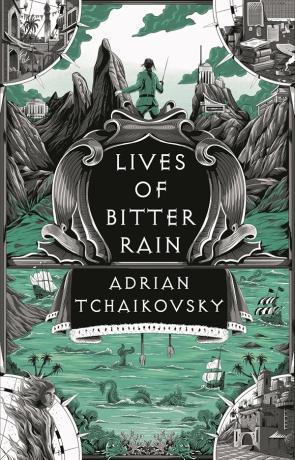60 Second adventures in thought
The Open University has created six very interesting little videos that explain some of the most famous thought experiments.
Narrated by David Mitchell and animated in a friendly style, these 60 second videos are both fascinating and insightful.
From the 5th Century BC all the way up to the late 20th Century AD, these thought experiments have been devised by some of the greatest minds in history including German mathematician David Hilbert, French physicist Paul Langevin and of course the Austrian physicist Erwin Schrödinger.
1.The Paradox of the Tortoise and Achilles, generally considered to have been first devised by the 5th century BC Greek philosopher Zeno of Elea.
2. The Grandfather Paradox, that mainstay of science fiction, first described by the french scifi writer René Barjavel in his 1943 book Le Voyageur Imprudent.
3. The Chinese room, a thought experiment that was created by John Searle and appeared in his paper "Minds, Brains, and Programs" back in 1980.
4. Hilbert's paradox of the Grand Hotel was proposed by the German mathematician David Hilbert and deals with a quite mind boggling theory of Infinity.
5. The Twin paradox is an experiment in special relativity, first described by the French physicist Paul Langevin in 1911.
6. Arguably the most famous thought experiment ever devised, Schrödinger's cat illustrates the Copenhagen interpretation of quantum mechanics and was first described by Austrian physicist Erwin Schrödinger in 1935.
News Archives
- August 2024
- July 2023
- April 2023
- February 2023
- September 2022
- March 2022
- February 2022
- July 2021
- June 2021
- April 2021
- March 2021
- January 2021
- October 2020
- September 2020
- June 2020
- March 2020
- May 2019
- January 2019
- November 2018
- January 2016
- September 2015
- August 2015
- July 2015
- June 2015
- May 2015
- April 2015
- March 2015
- January 2015
- October 2014
- June 2014
- April 2014
- March 2014
- February 2014
- January 2014
- December 2013
- November 2013
- October 2013
- September 2013
- June 2013
- May 2013
- April 2013
- March 2013
- January 2013
- December 2012
- November 2012
- August 2012
- July 2012
- June 2012
- May 2012
- April 2012
- March 2012
- February 2012
- January 2012
- December 2011
- November 2011
- October 2011
- September 2011
- August 2011
- July 2011
- June 2011
- May 2011
- April 2011
- March 2011
- February 2011
- January 2011
- December 2010
- November 2010
- October 2010
- September 2010
- August 2010
- July 2010
- June 2010
- May 2010
- April 2010
- March 2010
- February 2010
- January 2010
- December 2009
- November 2009
- October 2009
- September 2009
- August 2009
- July 2009
- June 2009
- May 2009
- April 2009
- March 2009
- February 2009
- January 2009
- December 2008
- November 2008
- October 2008
- September 2008
